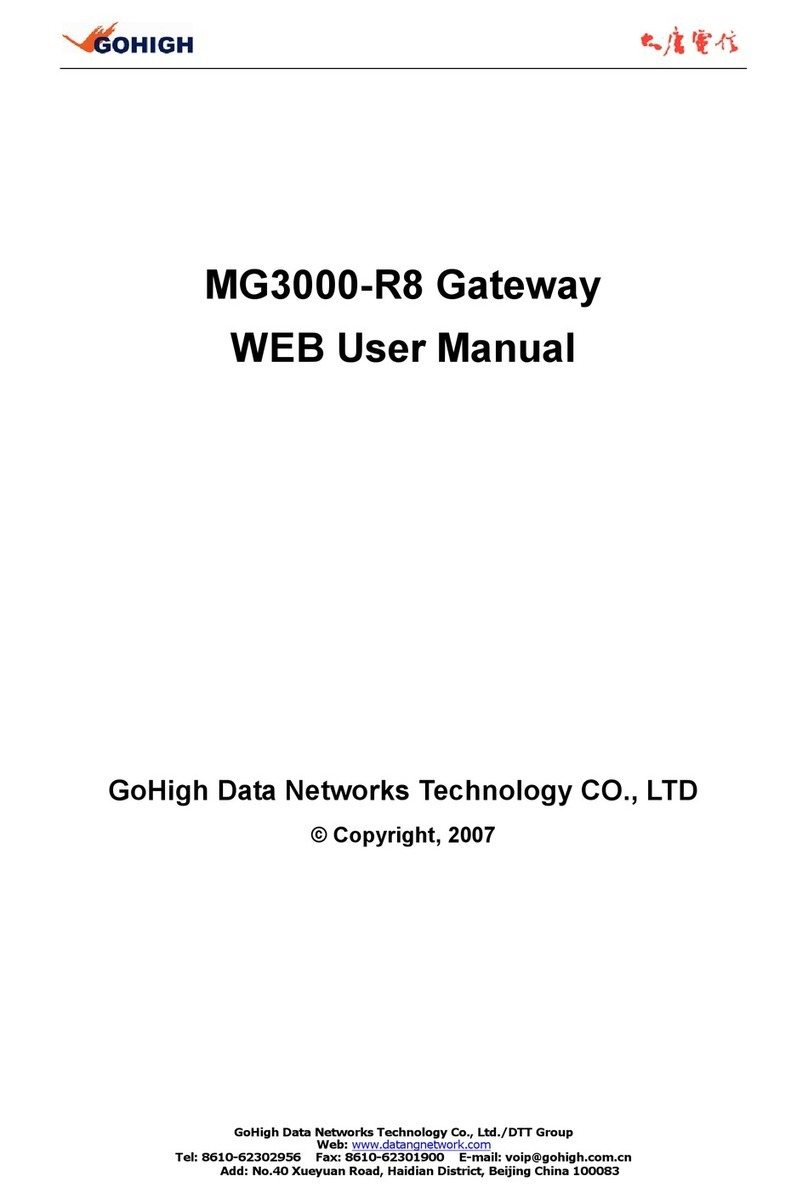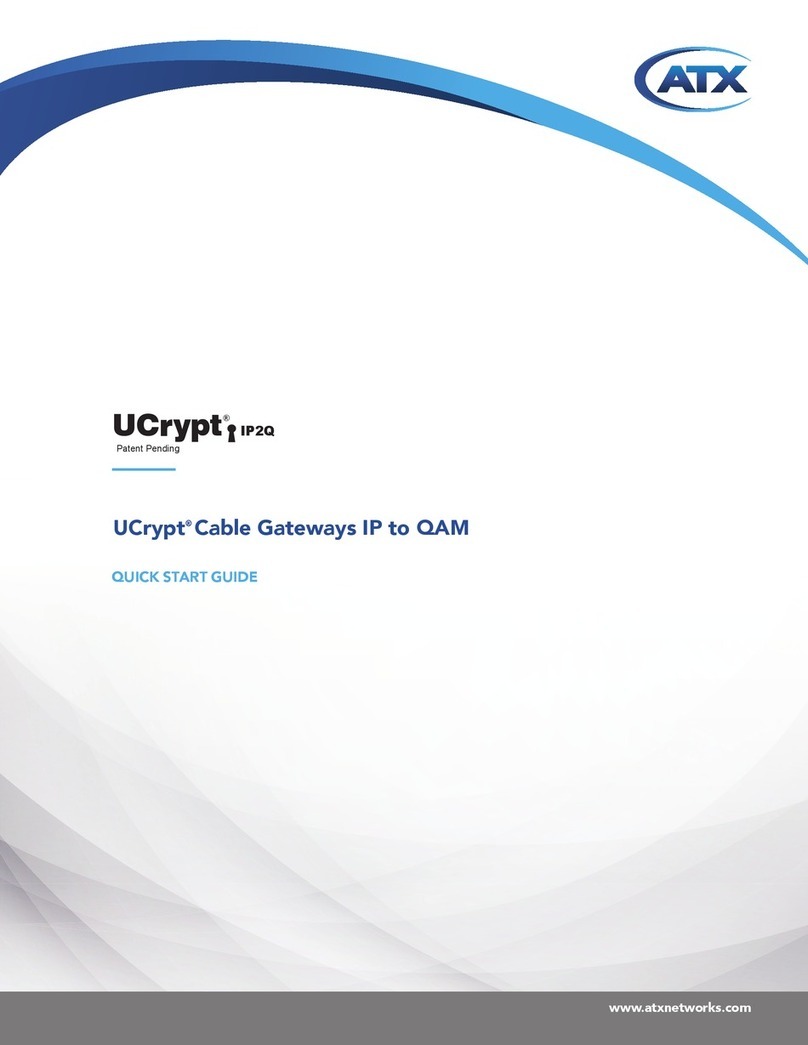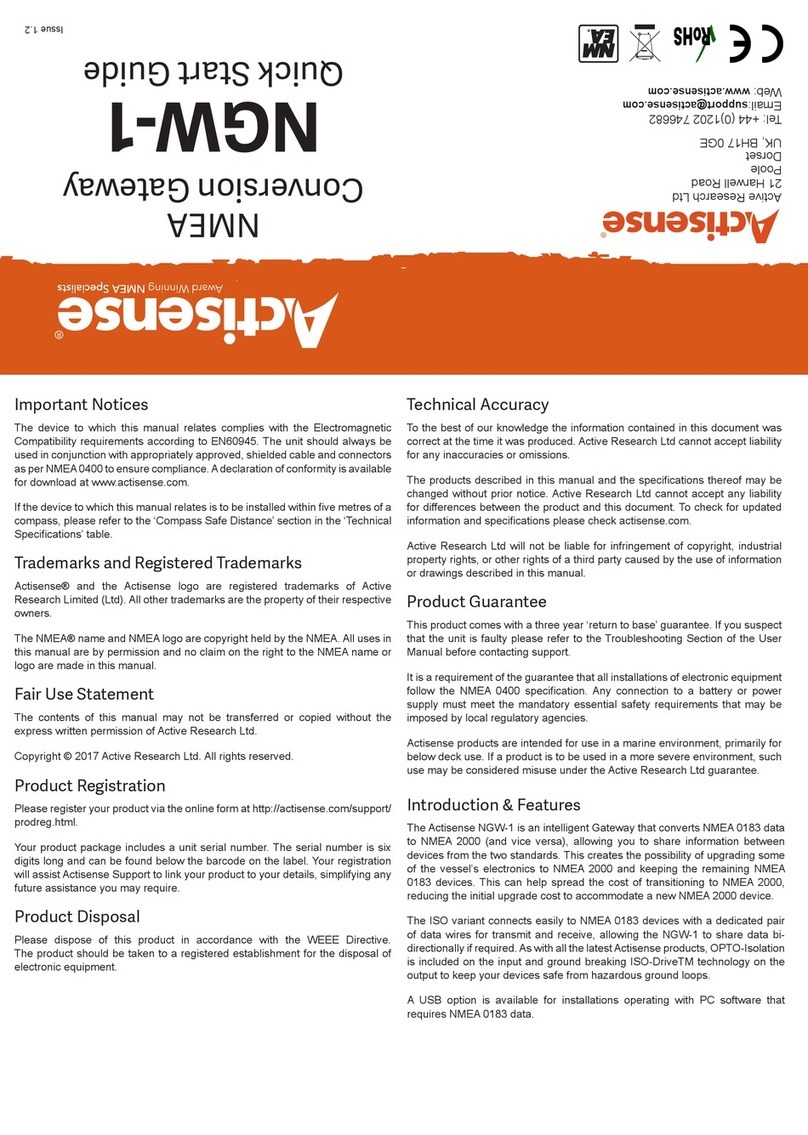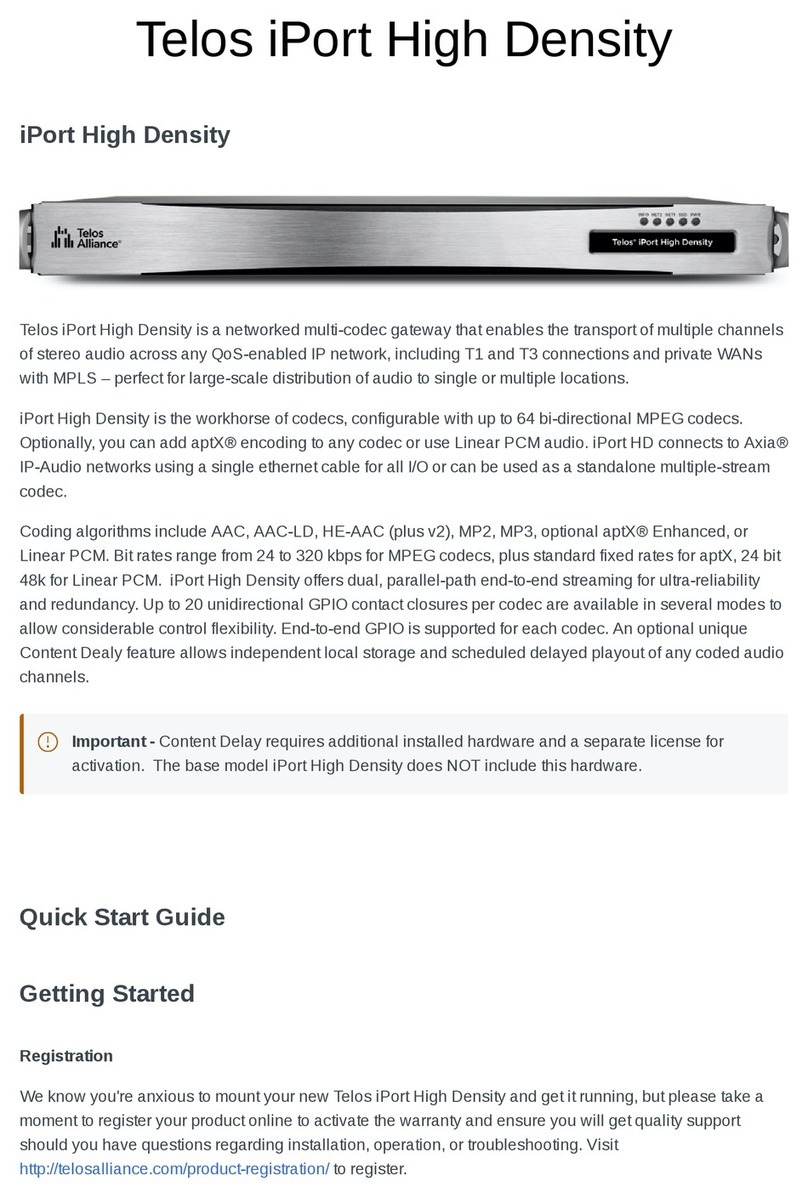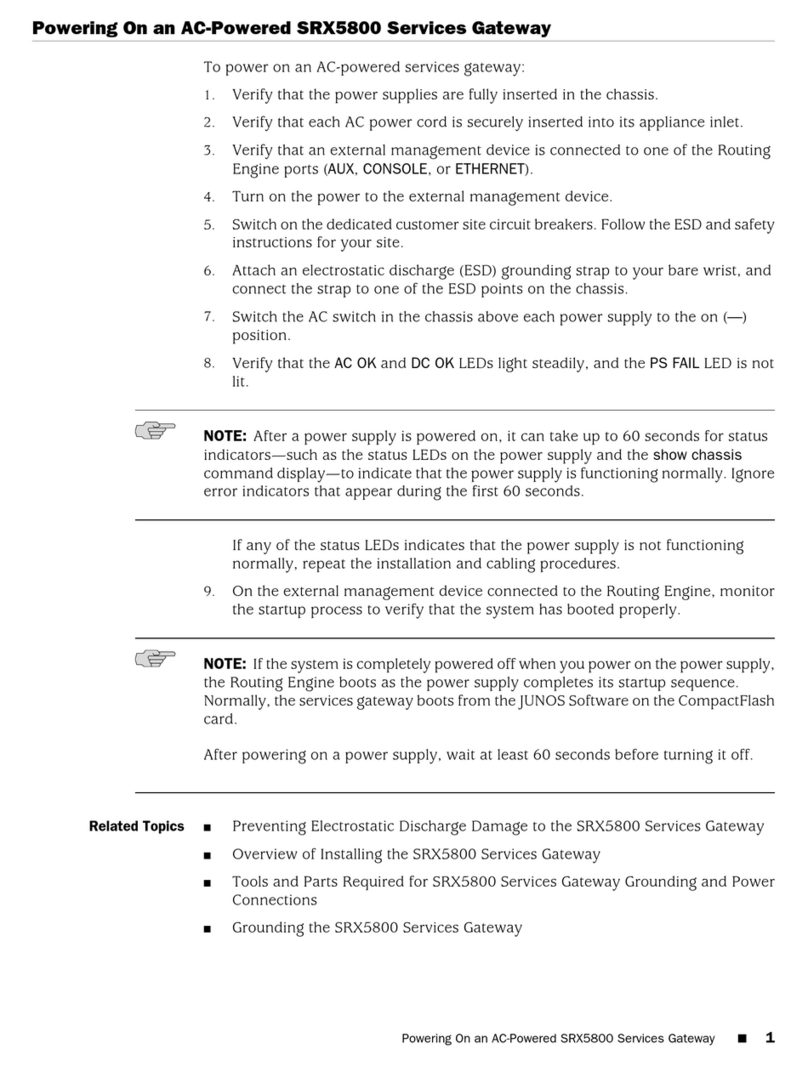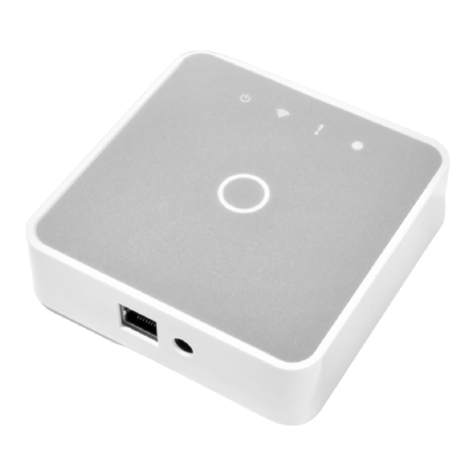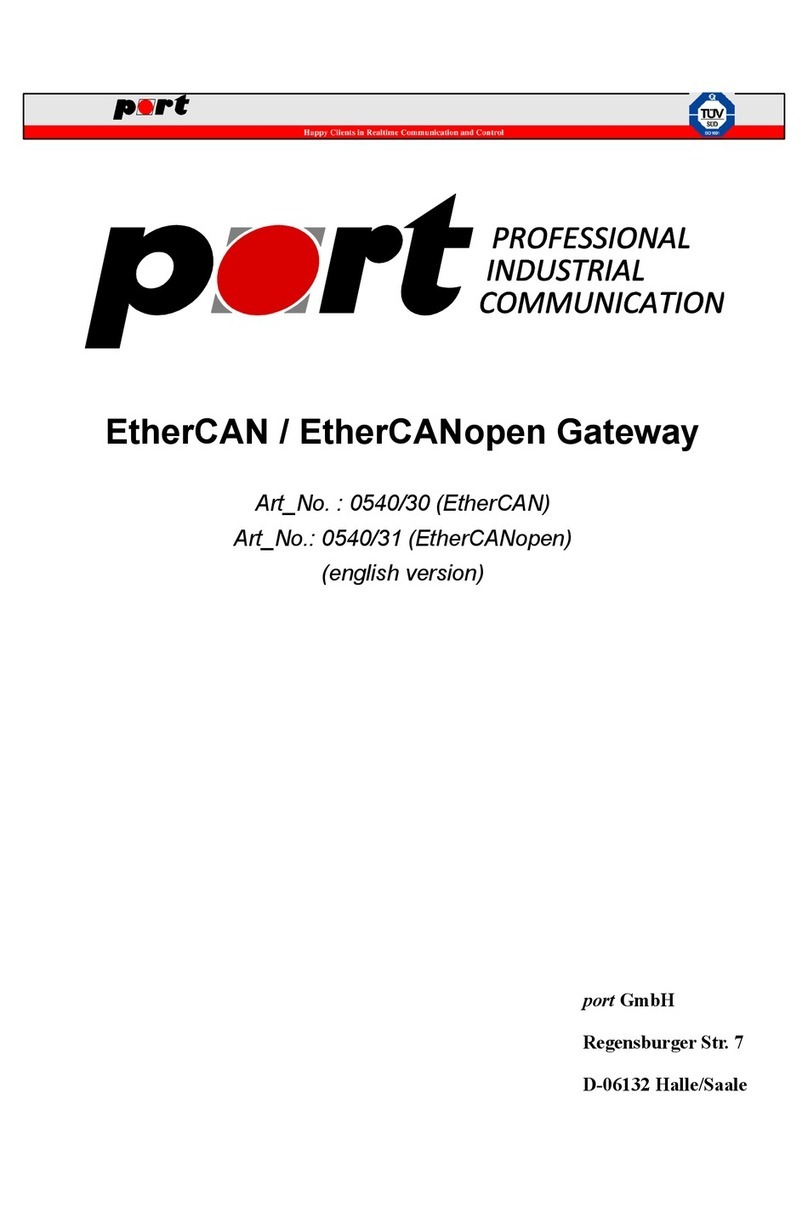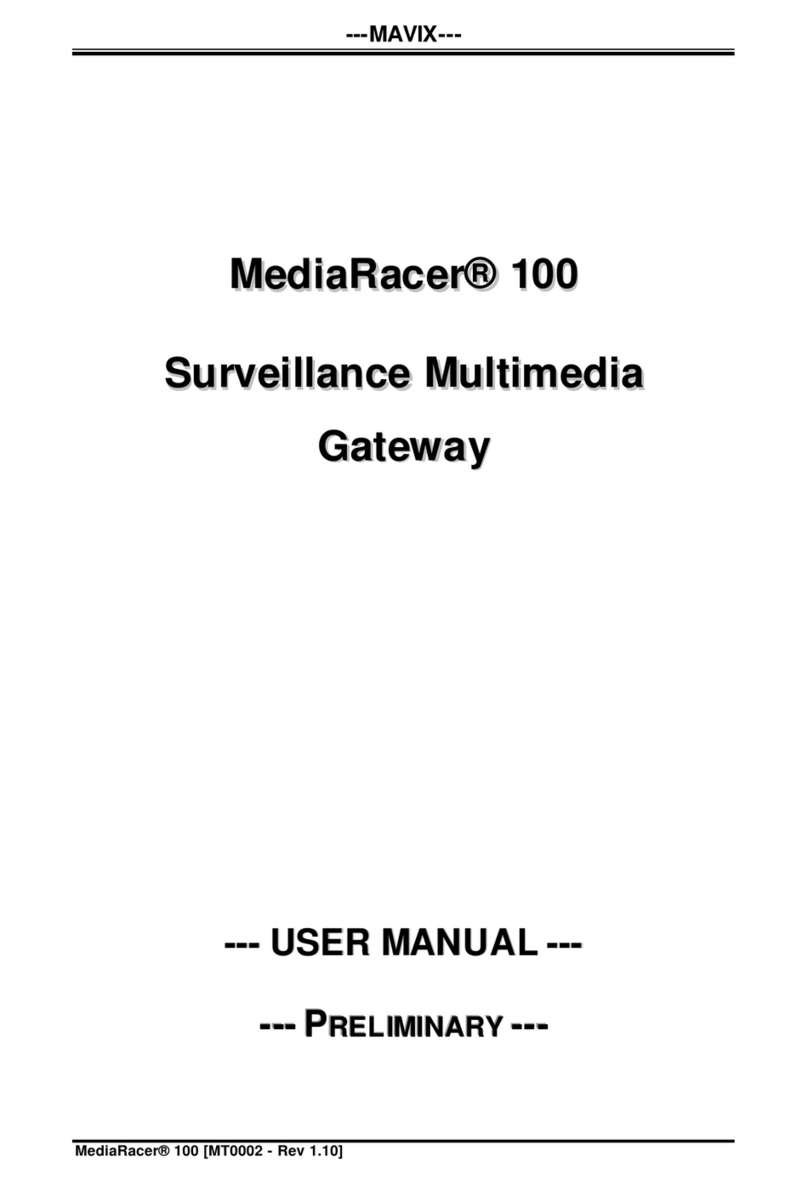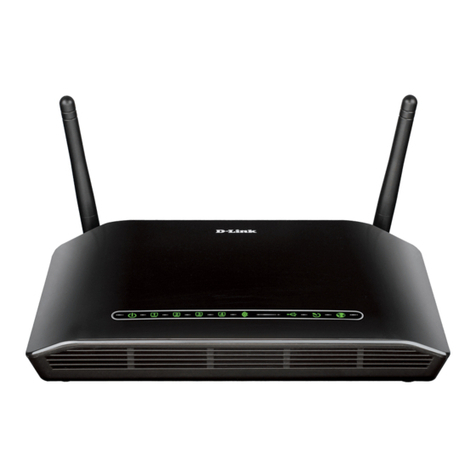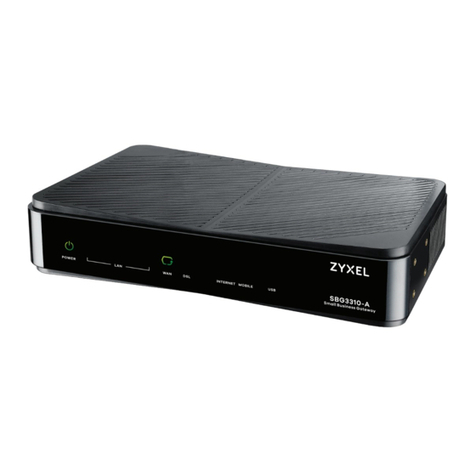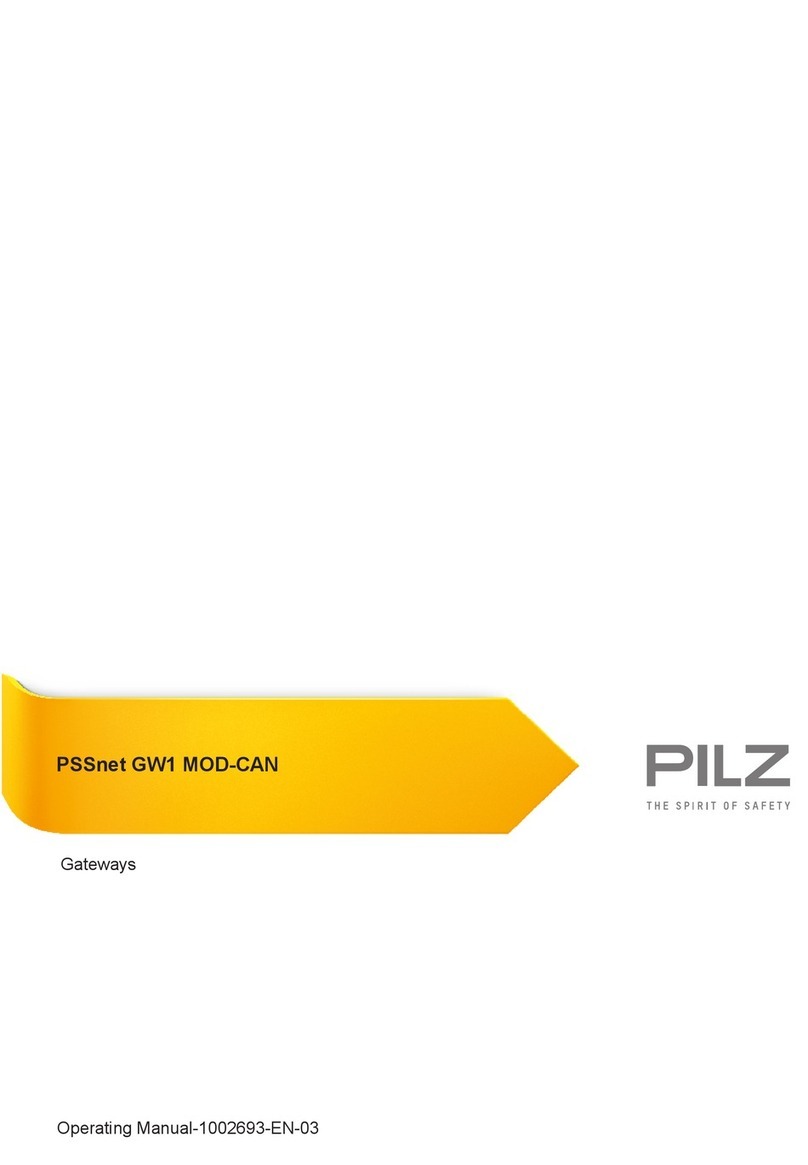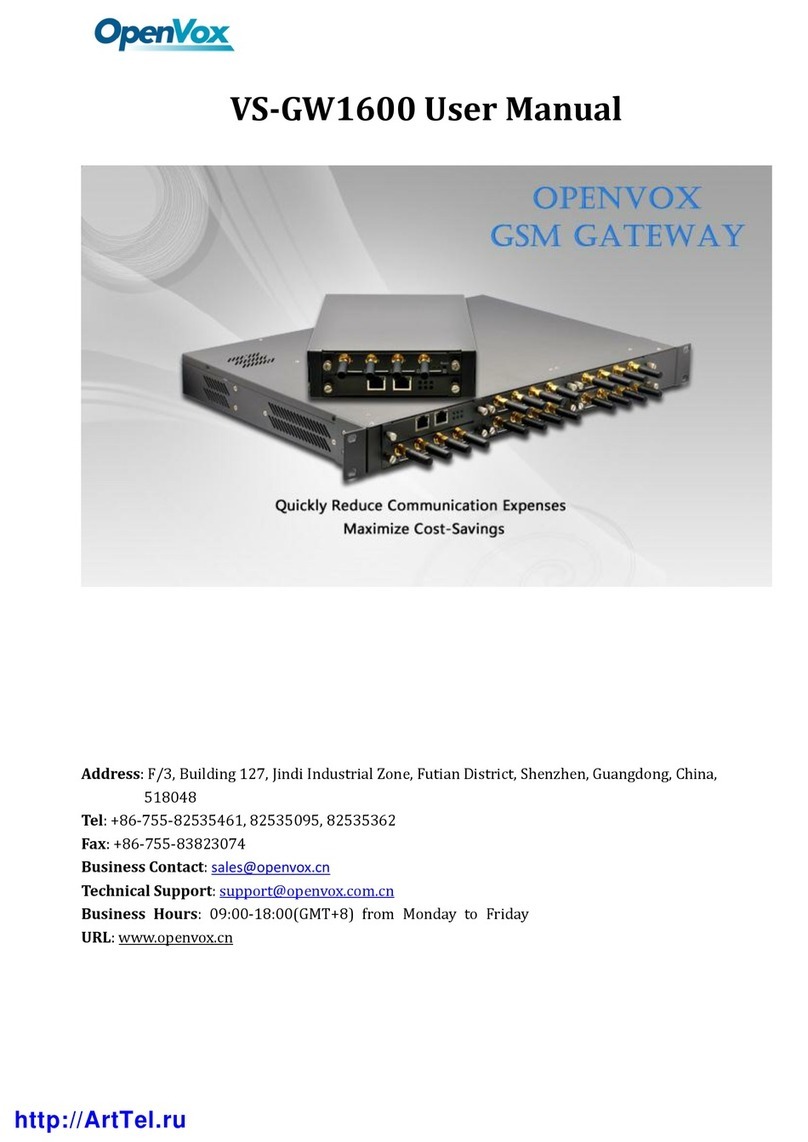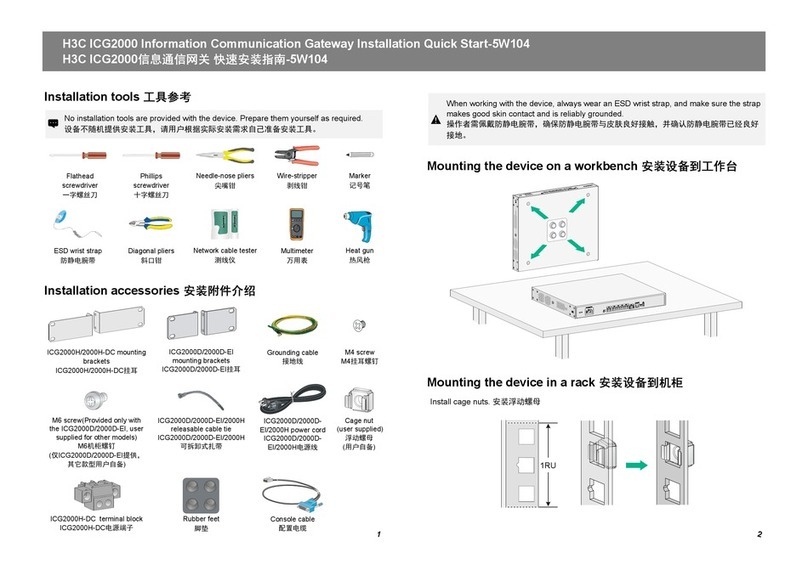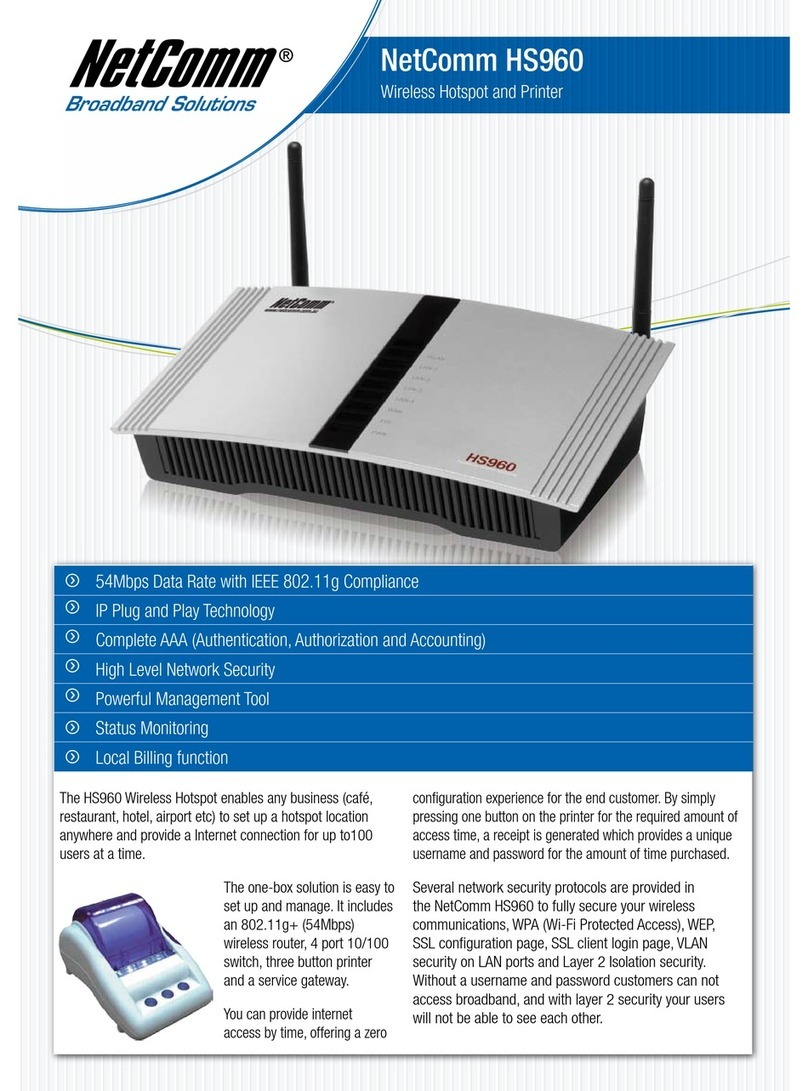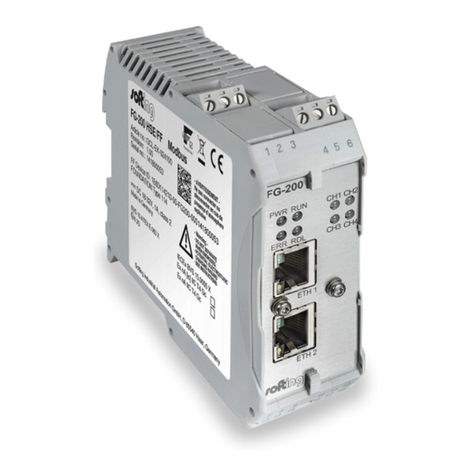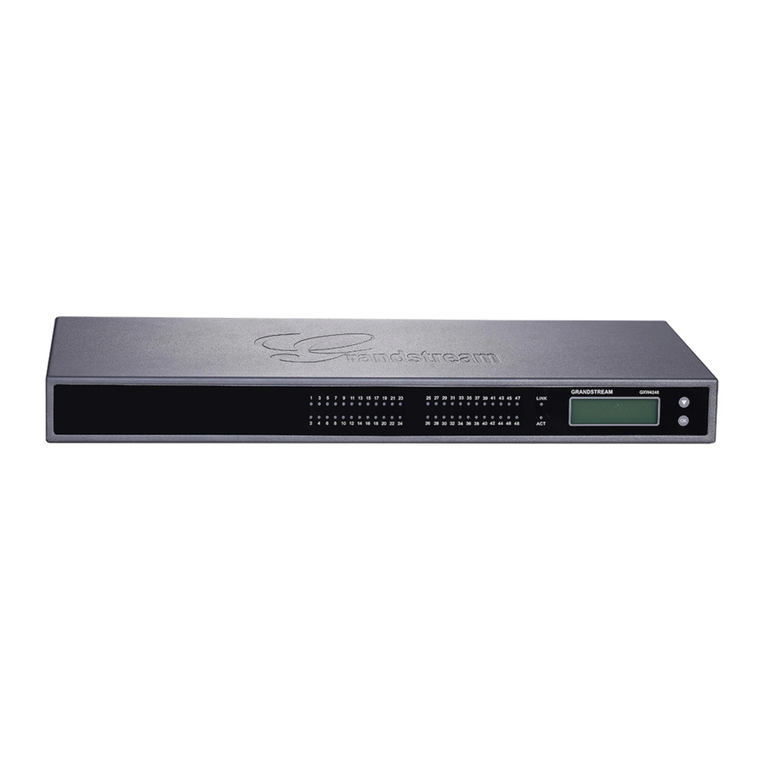GoHigh MG3000-R User manual

VOIP GATEWAY
User manual
GoHigh Data Networks Technology CO., LTD
© Copyright, 2009

C
Co
on
nt
te
en
nt
ts
s
The in ormation in this guide is organized into the ollowing chapters and
appendices:
Chapter 1 Introducing VOIP GATEWAY
Include appearance, speci ication, technical characteristics and description.
Chapter 2 Installation steps
It Includes installation notes, parts inventory, installation preparation and
explanation.
Chapter Device Management
It Introduce VOIP GATEWAY product management, include:
Chapter 4, Instructions or keyboard inquiry, Chapter 5, Web con igure
description, appendix II Command Guide
Chapter 6 Service
It introduces this voip gateway’s basic service and supplyment service. And
also special unction or ail over, call process tone, number magni ication,
intelligent routing, answer and disconnect supervision.
Chapter 7 Maintance and problem location
Include version upgrade, normal trouble diagnosis and troubleshooting
Chapter 8 8 FAQ
Introduce how to handle normal problems.
I there is not special note, this manual can be used or Voip gateway 32
ports and 8 ports.
When you are reading this manual, please notice that it has 3 levels:
1、About individual con iguration items (Chapter 5);
2、About service and unctions (Chapter 6);
3、About common problems (Chapter 8);
In these three chapters, inevitably some contents may overlap; readers may
use the links in the text to make re erence.

C
Co
on
nt
te
en
nt
ts
s
C
Co
on
nt
te
en
nt
ts
s ........................................................................................................................... 2
1
1
I
In
nt
tr
ro
od
du
uc
ci
in
ng
g
V
VO
OI
IP
P
G
GA
AT
TE
EW
WA
AY
Y
v
vo
oi
ip
p
g
ga
at
te
ew
wa
ay
y ..................................................... 7
1
1.
.1
1
P
Pr
ro
od
du
uc
ct
t
A
Ap
pp
pe
ea
ar
ra
an
nc
ce
e ................................................................................ 7
1
1.
.1
1.
.1
1
V
VO
OI
IP
P
G
GA
AT
TE
EW
WA
AY
Y-
-
2
2 ............................................................................ 7
1
1.
.1
1.
.2
2
V
VO
OI
IP
P
G
GA
AT
TE
EW
WA
AY
Y-
-8
8 .............................................................................. 9
1
1.
.2
2
P
Pr
ro
od
du
uc
ct
t
s
sp
pe
ec
ci
if
fi
ic
ca
at
ti
io
on
ns
s ........................................................................... 11
1
1.
.
T
Te
ec
ch
hn
ni
ic
ca
al
l
C
Ch
ha
ar
ra
ac
ct
te
er
ri
is
st
ti
ic
cs
s ..................................................................... 12
1
1.
.4
4
P
Pr
ro
od
du
uc
ct
t
D
De
es
sc
cr
ri
ip
pt
ti
io
on
n ............................................................................... 13
1
1.
.4
4.
.1
1
V
VO
OI
IP
P
G
GA
AT
TE
EW
WA
AY
Y-
-
2
2 .......................................................................... 13
1
1.
.4
4.
.2
2
V
VO
OI
IP
P
G
GA
AT
TE
EW
WA
AY
Y-
-8
8 ............................................................................ 16
2
2
I
In
ns
st
ta
al
ll
la
at
ti
io
on
n
s
st
te
ep
ps
s ................................................................................................... 18
2
2.
.1
1
I
In
ns
st
ta
al
ll
la
at
ti
io
on
n
n
no
ot
te
es
s ..................................................................................... 18
2
2.
.1
1.
.1
1
S
Sa
af
fe
et
ty
y
r
re
ec
co
om
mm
me
en
nd
da
at
ti
io
on
ns
s ............................................................... 18
2
2.
.1
1.
.2
2
L
Li
im
mi
it
ta
at
ti
io
on
n
o
of
f
s
si
ig
gn
na
al
l
t
tr
ra
an
ns
sm
mi
is
ss
si
io
on
n
d
di
is
st
ta
an
nc
ce
e .............................. 18
2
2.
.1
1.
.
R
Re
eq
qu
ui
ir
re
em
me
en
nt
ts
s .................................................................................... 19
2
2.
.1
1.
.4
4
C
Co
or
rr
re
ec
ct
t
w
wi
ir
ri
in
ng
g
s
so
ol
lu
ut
ti
io
on
n ................................................................... 19
2
2.
.2
2
P
Pa
ar
rt
ts
s
l
li
is
st
t ..................................................................................................... 19
2
2.
.
I
In
ns
st
ta
al
ll
l
p
pr
re
ep
pa
ar
ra
at
ti
io
on
n ................................................................................... 20
2
2.
.4
4
I
In
ns
st
ta
al
ll
la
at
ti
io
on
n
a
ap
pp
pr
ro
oa
ac
ch
h ............................................................................. 21
2
2.
.4
4.
.1
1
D
De
ep
pl
lo
oy
ym
me
en
nt
t ............................................................................................... 21
2
2.
.4
4.
.2
2
W
Wi
ir
ri
in
ng
g ......................................................................................................... 22
2
2.
.4
4.
.2
2.
.1
1
V
VO
OI
IP
P
G
GA
AT
TE
EW
WA
AY
Y-
-
2
2 .......................................................................... 22
2
2.
.4
4.
.2
2.
.2
2
V
VO
OI
IP
P
G
GA
AT
TE
EW
WA
AY
Y-
-8
8 ............................................................................ 22
2
2.
.4
4.
.
P
Po
ow
we
er
r
o
on
n.................................................................................................... 23
E
Eq
qu
ui
ip
pm
me
en
nt
t
m
ma
an
na
ag
ge
em
me
en
nt
t
d
de
es
sc
cr
ri
ip
pt
ti
io
on
n .............................................................. 23
3
3.
.1
1
K
Ke
ey
yb
bo
oa
ar
rd
d
i
in
nq
qu
ui
ir
ry
y ..................................................................................... 23
3
3.
.2
2
W
We
eb
b
a
ac
cc
ce
es
ss
s ............................................................................................... 23
3
3.
.3
3
C
Co
om
mm
ma
an
nd
d
l
li
in
ne
e .......................................................................................... 23
3
3.
.4
4
U
Un
ni
if
fi
ie
ed
d
n
ne
et
tw
wo
or
rk
k
m
ma
an
na
ag
ge
em
me
en
nt
t .............................................................. 23
4
4
I
In
ns
st
tr
ru
uc
ct
ti
io
on
ns
s
f
fo
or
r
k
ke
ey
yb
bo
oa
ar
rd
d
i
in
nq
qu
ui
ir
ry
y ..................................................................... 25
5
5
W
We
eb
b
C
Co
on
nf
fi
ig
gu
ur
ra
at
ti
io
on
n ................................................................................................ 26
5
5.
.1
1
L
Lo
og
gi
in
n ........................................................................................................... 27
5
5.
.2
2
Q
Qu
ui
ic
ck
ks
se
et
tu
up
p ................................................................................................ 27
5
5.
.2
2.
.1
1
H
H.
.
2
2
p
pr
ro
ot
to
oc
co
ol
l ................................................................................... 27
5
5.
.2
2.
.2
2
S
SI
IP
P
p
pr
ro
ot
to
oc
co
ol
l ....................................................................................... 31
5
5.
.3
3
B
Ba
as
si
ic
c
c
co
on
nf
fi
ig
g .............................................................................................. 35
5
5.
.3
3.
.1
1
P
Pr
ro
ot
to
oc
co
ol
l
C
Co
on
nf
fi
ig
gu
ur
ra
at
ti
io
on
n ................................................................... 35
5
5.
.3
3.
.2
2
P
Po
or
rt
t....................................................................................................... 41
5
5.
.3
3.
.3
3
C
Ch
ha
an
nn
ne
el
l ............................................................................................... 43
5
5.
.4
4
A
Ad
dv
va
an
nc
ce
ed
d
C
Co
on
nf
fi
ig
gu
ur
ra
at
ti
io
on
n ....................................................................... 47
5
5.
.4
4.
.1
1
F
FX
XS
S ....................................................................................................... 47
5
5.
.4
4.
.2
2
F
FX
XO
O
p
po
or
rt
t
s
se
et
tt
ti
in
ng
g ............................................................................... 50
5
5.
.4
4.
.3
3
V
Vo
oi
ic
ce
e(
(
c
ca
al
ll
l
p
pr
ro
oc
ce
es
ss
s
t
to
on
ne
e
)
) .............................................................. 53
5
5.
.4
4.
.4
4
S
Su
up
pp
pl
ly
ym
me
en
nt
t
s
se
er
rv
vi
ic
ce
e ......................................................................... 56

5
5.
.4
4.
.5
5
N
Ne
et
t
M
Ma
an
na
ag
ge
e
S
Se
et
tt
ti
in
ng
g ......................................................................... 59
5
5.
.5
5
N
NB
BR
R
E
Ex
xc
ch
ha
an
ng
ge
e ......................................................................................... 60
5
5.
.5
5.
.1
1
D
Di
ig
gi
it
t
M
Ma
ap
p............................................................................................. 60
5
5.
.5
5.
.2
2
S
Sp
pe
ee
ed
dD
Di
ia
al
l ........................................................................................... 61
5
5.
.5
5.
.3
3
C
Ch
ha
an
ng
ge
e
R
Ru
ul
le
e
(
(N
Nu
um
mb
be
er
r
c
ch
ha
an
ng
ge
e
r
ru
ul
le
e)
) ............................................ 62
5
5.
.5
5.
.4
4
D
Di
ia
al
le
ed
dN
NB
BR
RC
Ch
ha
an
ng
ge
e ........................................................................... 64
5
5.
.5
5.
.5
5
C
Ca
al
ll
le
er
r
C
Ch
ha
an
ng
ge
e .................................................................................... 67
5
5.
.5
5.
.6
6
R
Re
eg
ge
en
nN
NB
BR
RC
Ch
ha
an
ng
ge
e ........................................................................... 68
5
5.
.6
6
R
Ro
ou
ut
ti
in
ng
g ...................................................................................................... 70
5
5.
.6
6.
.1
1
R
Ro
ou
ut
te
eD
Di
ir
re
ec
ct
ti
io
on
n .................................................................................. 70
5
5.
.6
6.
.2
2
P
Pe
ee
er
r
t
to
o
P
Pe
ee
er
r
R
Ro
ou
ut
ti
in
ng
g ....................................................................... 71
5
5.
.6
6.
.3
3
T
Tr
ru
un
nk
k
R
Ro
ou
ut
ti
in
ng
g ................................................................................... 72
5
5.
.6
6.
.4
4
A
Ac
cc
ce
es
ss
s
C
Co
on
nt
tr
ro
ol
l
L
Li
is
st
t ......................................................................... 74
5
5.
.6
6.
.5
5
P
PS
ST
TN
N
U
Us
se
er
r
M
Ma
an
na
ag
ge
em
me
en
nt
t ................................................................ 75
5
5.
.7
7
I
In
nf
fo
or
rm
ma
at
ti
io
on
n................................................................................................ 76
5
5.
.7
7.
.1
1
P
Po
or
rt
t
S
St
ta
at
tu
us
s ......................................................................................... 76
5
5.
.7
7.
.2
2
S
Sy
ys
st
te
em
m
I
In
nf
fo
o ........................................................................................ 77
5
5.
.7
7.
.3
3
T
Tr
ra
ac
ce
e
i
in
nf
fo
or
rm
ma
at
ti
io
on
n ............................................................................. 78
5
5.
.8
8
D
De
ev
vi
ic
ce
e
M
Ma
an
na
ag
ge
em
me
en
nt
t ............................................................................... 79
5
5.
.8
8.
.1
1
U
Up
pd
da
at
te
e ................................................................................................. 79
5
5.
.8
8.
.2
2
P
Pa
as
ss
sw
wo
or
rd
d ............................................................................................ 80
5
5.
.8
8.
.3
3
D
De
ef
fa
au
ul
lt
t
s
se
et
tt
ti
in
ng
g ................................................................................... 80
5
5.
.8
8.
.4
4
S
Sa
av
ve
e ..................................................................................................... 81
5
5.
.8
8.
.5
5
R
Re
eb
bo
oo
ot
t ................................................................................................. 82
6
6
S
Se
er
rv
vi
ic
ce
e
F
Fu
un
nc
ct
ti
io
on
n
D
De
es
sc
cr
ri
ip
pt
ti
io
on
n ............................................................................ 83
6
6.
.1
1
B
Ba
as
si
ic
c
S
Se
er
rv
vi
ic
ce
e............................................................................................ 83
6
6.
.1
1.
.1
1
I
IP
P
V
Vo
oi
ic
ce
e
S
Se
er
rv
vi
ic
ce
e ................................................................................ 83
6
6.
.1
1.
.2
2
I
IP
P
F
FA
AX
X .................................................................................................. 86
6
6.
.1
1.
.3
3
D
DT
TM
MF
F
S
Se
ec
co
on
nd
da
ar
ry
y
D
Di
ia
al
l ..................................................................... 87
6
6.
.2
2
S
SP
PS
S
(
(S
Su
up
pp
pl
le
em
me
en
nt
ta
ar
ry
y
S
Se
er
rv
vi
ic
ce
e)
).............................................................. 87
6
6.
.2
2.
.1
1
S
SP
PS
S
t
th
hr
ro
ou
ug
gh
h
t
te
er
rm
mi
in
na
al
l ...................................................................... 87
6
6.
.2
2.
.2
2
S
SP
PS
S
t
th
hr
ro
ou
ug
gh
h
T
Te
er
rm
mi
in
na
al
l
c
co
oo
op
pe
er
ra
at
ti
io
on
n
w
wi
it
th
h
S
Se
er
rv
ve
er
r ...................... 93
6
6.
.3
3
F
FX
XO
O
M
Mo
od
de
e .................................................................................................. 97
6
6.
.3
3.
.1
1
I
IP
P-
-T
To
o-
-P
PS
ST
TN
N......................................................................................... 97
6
6.
.3
3.
.2
2
P
PS
ST
TN
N-
-T
To
o-
-I
IP
P....................................................................................... 100
6
6.
.3
3.
.3
3
P
PS
ST
TN
N
R
Ro
ou
ut
ti
in
ng
g .................................................................................. 103
6
6.
.4
4
C
Ca
al
ll
l
P
Pr
ro
og
gr
re
es
ss
s
T
To
on
ne
e ............................................................................... 104
6
6.
.4
4.
.1
1
T
To
on
ne
es
s
o
of
f
d
di
if
ff
fe
er
re
en
nt
t
c
co
ou
un
nt
tr
ri
ie
es
s ........................................................ 104
6
6.
.4
4.
.2
2
S
Se
el
lf
f-
-d
de
ef
fi
in
ne
ed
d
t
to
on
ne
e
f
fo
or
rm
ma
at
t............................................................... 105
6
6.
.4
4.
.3
3
B
Bu
us
sy
y
T
To
on
ne
e
D
De
et
te
ec
ct
ti
io
on
n ..................................................................... 106
6
6.
.4
4.
.4
4
B
Bu
us
sy
y
t
to
on
ne
e
A
Au
ut
to
o
L
Le
ea
ar
rn
ni
in
ng
g ............................................................. 109
6
6.
.5
5
N
Nu
um
mb
be
er
r
M
Ma
at
tc
ch
h ........................................................................................ 111
6
6.
.5
5.
.1
1
P
Pa
at
tt
te
er
rn
n
M
Ma
at
tc
ch
h
R
Ru
ul
le
e ........................................................................ 111
6
6.
.5
5.
.2
2
M
Ma
at
tc
ch
h
r
ru
ul
le
e......................................................................................... 112
6
6.
.5
5.
.3
3
A
Ap
pp
pl
li
ic
ca
at
ti
io
on
n ....................................................................................... 113
6
6.
.6
6
P
PS
ST
TN
N
C
Ca
al
ll
le
er
r
I
ID
D........................................................................................ 115

6
6.
.7
7
C
Ch
ha
an
ng
ge
e
R
Ru
ul
le
e ........................................................................................... 116
6
6.
.8
8
I
In
nt
te
el
ll
li
ig
ge
en
nt
t
R
Ro
ou
ut
te
e .................................................................................... 117
6
6.
.8
8.
.1
1
R
Ro
ou
ut
ti
in
ng
g
D
Di
ir
re
ec
ct
ti
io
on
n ........................................................................... 117
6
6.
.8
8.
.2
2
I
IP
P
F
Fa
al
ll
l
B
Ba
ac
ck
k ...................................................................................... 118
6
6.
.8
8.
.3
3
D
Di
ia
al
l
S
Sp
pe
ec
ci
ia
al
l
N
Nu
um
mb
be
er
r
t
to
o
C
Ch
ha
an
ng
ge
e
R
Ro
ou
ut
te
e ..................................... 120
6
6.
.9
9
D
DN
NS
S
S
SR
RV
V
F
Fu
un
nc
ct
ti
io
on
n ................................................................................ 121
6
6.
.1
10
0
A
An
ns
sw
we
er
r
S
Su
up
pe
er
rv
vi
is
si
io
on
n ............................................................................. 121
6
6.
.1
11
1
D
Di
is
sc
co
on
nn
ne
ec
ct
t
S
Su
up
pe
er
rv
vi
is
si
io
on
n ...................................................................... 121
6
6.
.1
11
1.
.1
1
B
Bu
us
sy
y
T
To
on
ne
e
D
De
et
te
ec
ct
ti
io
on
n ..................................................................... 121
6
6.
.1
11
1.
.2
2
R
Re
ev
ve
er
rs
sa
al
l
S
Si
ig
gn
na
al
l
D
De
et
te
ec
ct
ti
io
on
n ........................................................... 121
6
6.
.1
12
2
E
Ea
ar
rl
ly
y
M
Me
ed
di
ia
a ............................................................................................. 121
6
6.
.1
13
3
P
Po
or
rt
t
P
Po
ol
ll
li
in
ng
g ............................................................................................. 122
6
6.
.1
14
4
S
Se
ec
cu
ur
ri
it
ty
y
M
Me
ec
ch
ha
an
ni
is
sm
m ............................................................................. 122
6
6.
.1
14
4.
.1
1
E
En
nc
cr
ry
yp
pt
ti
io
on
n ........................................................................................ 122
6
6.
.1
14
4.
.2
2
A
AC
CL
L .................................................................................................... 123
6
6.
.1
14
4.
.3
3
P
PS
ST
TN
N
I
In
nc
co
om
mi
in
ng
g
C
Ca
al
ll
l
A
Au
ut
th
he
en
nt
ti
ic
ca
at
ti
io
on
n ......................................... 123
7
7
M
Ma
ai
in
nt
te
en
na
an
nc
ce
e
a
an
nd
d
T
Tr
ro
ou
ub
bl
le
e
S
Sh
ho
oo
ot
ti
in
ng
g ............................................................... 124
7
7.
.1
1
U
Up
pd
da
at
te
e ...................................................................................................... 124
7
7.
.1
1.
.1
1
H
HT
TT
TP
P
U
Up
pd
da
at
te
e ................................................................................... 124
7
7.
.1
1.
.2
2
T
TF
FT
TP
P
U
Up
pd
da
at
te
e .................................................................................... 124
7
7.
.1
1.
.3
3
U
Up
pd
da
at
te
e
p
pr
ro
oc
ce
ed
du
ur
re
es
s ........................................................................ 125
7
7.
.2
2
D
Di
ia
ag
gn
no
os
si
is
s ................................................................................................ 125
7
7.
.2
2.
.1
1
P
Po
or
rt
t
s
st
ta
at
tu
us
s
c
ch
he
ec
ck
k ........................................................................... 125
7
7.
.2
2.
.2
2
O
Ou
ut
tp
pu
ut
t
T
Tr
ra
ac
ce
e
i
in
nf
fo
or
rm
ma
at
ti
io
on
n............................................................. 125
7
7.
.2
2.
.3
3
I
IP
P
P
Pa
ac
ck
ke
et
ts
s......................................................................................... 126
7
7.
.3
3
D
De
eb
bu
ug
g
F
Fu
un
nc
ct
ti
io
on
n ..................................................................................... 126
7
7.
.3
3.
.1
1
W
WA
AN
N
P
Po
or
rt
t
M
Mi
ir
rr
ro
or
r ............................................................................. 126
7
7.
.3
3.
.2
2
O
Ou
ut
tp
pu
ut
t
T
TD
DM
M
D
Da
at
ta
a ............................................................................ 126
8
8
N
No
or
rm
ma
al
l
T
Tr
ro
ou
ub
bl
le
es
s .................................................................................................. 128
8
8.
.1
1
C
Ca
an
n
n
no
ot
t
e
es
st
ta
ab
bl
li
is
sh
h
a
a
c
ca
al
ll
l
d
du
ue
e
t
to
o
c
co
on
nf
fi
ig
gu
ur
re
e
e
er
rr
ro
or
r
i
in
n
n
nu
um
mb
be
er
r
m
ma
at
tc
ch
hi
in
ng
g
r
ru
ul
le
es
s .................................................................................................... 128
8
8.
.2
2
P
PS
ST
TN
N
C
Ca
al
ll
le
er
r
I
ID
D
d
di
is
sp
pl
la
ay
y
e
er
rr
ro
or
r .............................................................. 128
8
8.
.3
3
I
If
f
t
th
he
e
c
ca
al
ll
le
ee
e
n
nu
um
mb
be
er
r
i
is
s
#
#5
57
7#
#,
,
h
ho
ow
w
t
to
o
c
co
on
nf
fi
ig
gu
ur
re
e
i
it
t?
? ....................... 128
8
8.
.4
4
S
Sy
ys
st
te
em
m
c
ca
an
n
n
no
ot
t
s
st
ta
ar
rt
t
a
af
ft
te
er
r
v
ve
er
rs
si
io
on
n
u
up
pd
da
at
te
e ..................................... 129
8
8.
.5
5
C
Ca
an
n
n
no
ot
t
r
ri
in
ng
g
w
wi
it
th
h
m
mu
ul
lt
ti
ip
pl
le
e
p
ph
ho
on
ne
es
s
i
in
n
p
pa
ar
ra
al
ll
le
el
l
c
co
on
nn
ne
ec
ct
ti
io
on
n ......... 129
8
8.
.6
6
H
He
ea
ar
r
n
no
oi
is
se
e
i
in
n
r
ri
in
ng
gb
ba
ac
ck
k
t
to
on
ne
e ............................................................... 129
8
8.
.7
7
S
Si
ie
em
me
en
ns
s
P
Ph
ho
on
ne
e
C
CI
ID
D
d
di
is
sp
pl
la
ay
ys
s
i
in
nc
co
or
rr
re
ec
ct
tl
ly
y ....................................... 129
8
8.
.8
8
I
IP
P
r
ro
ou
ut
te
e
e
er
rr
ro
or
r,
,
c
ca
an
n
n
no
ot
t
s
sw
wi
it
tc
ch
h
t
to
o
P
PS
ST
TN
N............................................ 130
8
8.
.9
9
E
Es
st
ta
ab
bl
li
is
sh
h
a
a
c
ca
al
ll
l
i
in
n
O
On
ne
e-
-s
st
ta
ag
ge
e
m
mo
od
de
e,
,
b
bu
ut
t
t
th
he
e
c
ca
al
ll
l
i
is
s
i
in
nt
te
er
rr
ru
up
pt
te
ed
d
v
ve
er
ry
y
s
so
oo
on
n .............................................................................................................. 130
8
8.
.1
10
0
S
Se
en
nd
di
in
ng
g
r
re
em
mo
ot
te
e
r
ri
in
ng
gb
ba
ac
ck
k
t
to
on
ne
e
i
is
s
e
en
na
ab
bl
le
ed
d,
,
b
bu
ut
t
t
th
he
e
c
ca
al
ll
le
er
r
h
he
ea
ar
r
a
a
s
sh
ho
or
rt
t
t
to
on
ne
e
o
on
nl
ly
y.
.................................................................................................... 130
9
9
A
Ap
pp
pe
en
nd
di
ix
x
I
I
V
VO
OI
IP
P
T
Te
ec
ch
hn
ni
ic
ca
al
l
T
Te
er
rm
ms
s .................................................................. 131
C
Ca
al
ll
le
er
r
I
ID
D ................................................................................................................ 131
F
FS
SK
K......................................................................................................................... 131
D
DT
TM
MF
F ..................................................................................................................... 131

R
RT
TP
P
R
Re
ed
du
un
nd
da
an
nc
cy
y ............................................................................................... 132
T
T.
.
8
8
F
Fa
ax
x................................................................................................................. 133
B
By
yp
pa
as
ss
s
F
Fa
ax
x .......................................................................................................... 133
A
An
ns
sw
we
er
r
S
Su
up
pe
er
rv
vi
is
si
io
on
n .......................................................................................... 133
D
Di
is
sc
co
on
nn
ne
ec
ct
t
S
Su
up
pe
er
rv
vi
is
si
io
on
n ................................................................................... 134
F
FX
XS
S、
、、
、
、
、、
、F
FX
XO
O、
、、
、
、
、、
、E
E&
&M
M
I
In
nt
te
er
rf
fa
ac
ce
e .............................................................................. 134
T
Th
he
e
d
di
if
ff
fe
er
re
en
nc
ce
e
b
be
et
tw
we
ee
en
n
F
FX
XO
O
a
an
nd
d
L
Li
if
fe
el
li
in
ne
e ................................................... 135

1
1
I
In
nt
tr
ro
od
du
uc
ci
in
ng
g
V
VO
OI
IP
P
G
GA
AT
TE
EW
WA
AY
Y
v
vo
oi
ip
p
g
ga
at
te
ew
wa
ay
y
This guide describes the administration and use o this VOIP GATEWAY analogue
telephone adapter (ATAs). Gohigh ATA devices are a key element in the end to end IP
telephony solution. A Gohigh ATA device provides user access to Internet phone services
through one or more standard telephone RJ-11 phone ports using standard analog telephone
equipment. The Gohigh ATA device connects to a wide area IP network, such as the Internet,
through a broadband (DSL or wireless) modem or router.
Fig 1 Voip gateway toplogical diagram
1
1.
.1
1
P
Pr
ro
od
du
uc
ct
t
A
Ap
pp
pe
ea
ar
ra
an
nc
ce
e
1
1.
.1
1.
.1
1
V
VO
OI
IP
P
G
GA
AT
TE
EW
WA
AY
Y-
-
2
2
Fig 2
VOIP GATEWAY-32 appearance
VOIP GATEWAY-32 use metal chasis , 1U height, 19 inch width, dark gray colored.
Fig 3
VOIP GATEWAY-32 appearance 2

There are status LED, reset button, Ethernet ports, console port on the VOIP
GATEWAY-32
The LED is used to indicate this box’s work state, port’s state. The 32 ports status LED is
sequenced rom le t to right.
Reset button is printed as RST. Press Reset button shortly, system will reboot; i press
the button or more than 3 seconds, system will restore actory settings.
LED
Color
Status
Description
PWR
Green
On
Device power on
O
Device is power o
RUN
Green
Twinkle
Running
On
System launching
WAN A/L
Green
Twinkle quic
kly
WAN running well
O
WAN disconnected or in trouble
WAN SPD
Green
On
Speed 100M
O
Speed 100M
LAN A/L
Green
Twinkle quickly
LAN running well
O
WAN disconnected or in trouble
LAN SPD
Green
On
Speed 100M
O
Speed 100M
Port status
Green
On
Port pick up
O
Port hang up
Table 1
VOIP
GATEWAY-32
LED
MEANING
TABLE
Interface
Interface
Type
RST
Reboot
system/restore
actory settings
WAN
Ethernet port
RJ45, 10/100Base
-
T, adaptive
LAN
Ethernet port
RJ45, 10/100Base-T, adaptive
CONSOLE
Serial port
RS
-
232
Table 2
VOIP
GATEWAY-32
PORTS ON FRONT PANNEL
Fig 4
VOIP GATEWAY-32 back panel ,220V AC
Fig 5
VOIP GATEWAY-32 back panel, 48V DC

VOIP GATEWAY32 back panel has sub-card inter ace and power inter ace. The power
or VOIP GATEWAY-32 has 2 types: 220V AC and 48V DC. Those two type power plug is
di erent. 220VAC、48VDC, the corresponding inter aces are di erent. 220AC inter ace
adopts common three-phase power inter ace (Figure 3); 48VDC inter ace should adopt the
power lines attached in the package to connect the -48V power supply. 48V power inter ace
has 1:1 backup with a switch.
Sub card has 3 type inter ace: FXS, FXO, PSTN.
FXS connects user telephone or FXO port o PBX, providing remote eed
FXO connects subscribe lines o PSTN, need remote eed
PSTN port connects subscribe lines o PSTN, need remote eed
For details o the di erence, please re er to corresponding description in Appendix I.
When you ace to the back panel, sub-card and inter ace are arrayed rom le t to right.
4S4O subcard’s irst 4 ports are FXS, the last 4 ports are FXO. 4S4L subcard’s irst 4 ports
are FXS, the last 4 ports are FXO.
Interface
Interface
Type
8S
4*FXS+4*FXS ports
1*RJ45+1*RJ45
8O
8*FXO ports
1*RJ45+1*RJ45
4S4O
4*FXS+4*FXO ports
1*RJ45+1*RJ45
4S4L
4*FXS+4*PSTN ports
1*RJ45+1*RJ45
Power inter ace
(220VAC)
220VAC, 50~60Hz
Power inter ace
(48V DC)
48VDC
Table 3
VOIP
GATEWAY-32
PORTS ON FRONT PANNEL
1
1.
.1
1.
.2
2
V
VO
OI
IP
P
G
GA
AT
TE
EW
WA
AY
Y-
-8
8

Fig 6
VOIP GATEWAY-8 appearance
VOIP GATEWAY-8 use metal chasis , 40mm high, 151mm long, 238mm wide, dark gray
colored. Indicator LEDs instructs the running status o the system, and the port status (Table
4).The LEDs are arrayed rom le t to right when you ace the ront panel.
LED
Color
Status
Description
PWR
Green
On
De
vice power on
O
Device is power o
RUN
Green
Twinkle
Running
On
System launching
WAN
Green
Twinkle quickly
WAN running well
O
WAN disconnected or in trouble
LAN
Green
Twinkle quickly
LAN running well
O
WAN disconnected or in trouble
Port status
Green
On
Port pick up
O
Port hang up
Table 4
VOIP
GATEWAY-8
LED
MEANING
TABLE
On the Voip Gateway-8 back panel, there are power plug, reset button, console port,
Ethernet ports telephone ports. It use 220V AC power input.
Reset button is printed as RST. Press Reset button shortly, system will reboot; i press
the button or more than 3 seconds, system will restore actory settings.
There are 2 type telephone ports on it, FXS and FXO.
FXS connects user telephone or FXO port o PBX, providing remote eed
FXO connects subscribe lines o PSTN, need remote eed

1 2 3 4CONSOLE WAN LAN
220VAC
5 6 7 8
RST
Ethernet FXS FXO
Fig 7
VOIP GATEWAY-8 4FXS4FXO back panel
1 2 3 4
CONSOLE WAN LAN
220VAC
5678
RST
Ethernet FXO
Fig 8
VOIP GATEWAY-8 8FXO back panel
Interface
Interface
Type
RST
Reboot
system/restore
actory settings
CONSOLE
Serial port
RS-232
WAN
Ethernet port
RJ45, 10/100Base-T, adaptive
LAN
Ethernet port
RJ45, 10/100Base
-
T, adaptive
Table 5
VOIP
GATEWAY-8
PORTS ON FRONT PANNEL
1
1.
.2
2
P
Pr
ro
od
du
uc
ct
t
s
sp
pe
ec
ci
if
fi
ic
ca
at
ti
io
on
ns
s
Items
Description
System memory
64 M
System flash
8 M
FXS feed voltage when
hang up the phone
-48V
FXS feed voltage when
pick up the phone
-24V
FXS ringing voltage
40V(valid value)
FXS ringing current
10~15mA
FXS ringer equivalent
value
Short loop is 5, long loop is 3
FXS loop current
Not less than 18 mA
FXS loop resistance
Allow user line’s loop resistance arrives 2100 ohm (including phone
impedance)
FXS loop curr
ent
10~16mA
Surge voltage / tolerant
voltage
Subscribe line meet level 2 surge (instant high voltage during voltage
luctuation) protection requirements, can bear 1500 volts (10/1000uS)
surge voltage.
The longest line length
3 KM
Off hook detection
Loop
detection start
Dial mode
DTMF
Power supply voltage(
((
(AC)
))
)
110V or 220V AC, 85V~264V
Power supply voltage(
((
(DC)
))
)
36V -72V DC
current
Maximum: 0.5A
Power consumption
Maximum: 40W
Environmental temperature
0~+55℃

during runtime
Environmental temperature
when not running
-10~+80℃
Humidity during runtime
0~80% (non-solidi ication)
Physical dimensions
Width X Depth X Height , 482mm X 261mm X 44mm
Net weight
5.5kg
Table 6
VOIP
GATEWAY-32
SPECIFICATION
Items
Description
System memory
64 M
System flash
8 M
FXS feed voltage when
hang up the phone
-48V
FXS feed voltage when
pick up the phone
-24V
FXS ringing voltage
40V(valid value)
FXS ringing current
10~15mA
FXS ringing equivalent
value
Short loop is 5, long loop is 3
FXS ringing current
Not less than 18 mA
FXS loop resistance
Allow user’s loop resistance arrives 2100 ohm (including phone
impedance)
FXS loop curre
nt
10~15mA
Surge voltage / tolerant
voltage
Subscribe line meet level 2 surge (instant high voltage during voltage
luctuation) protection requirements, can bear 1500 volts (10/1000uS)
surge voltage.
The longest line length
3 KM
Off hook detection
Loop detection start
Dial mode
DTMF
Power supply voltage(
((
(AC)
))
)
110V or 220V AC, 85V~264V
current
Maximum: 0.2A
Power consumption
Maximum: 18W
Environmental temperature
during runtime
0~+55℃
Environmental temperature
when not running
-10~+80℃
Humidity during runtime
0~80% (non
-
solidi ication)
Physical dimen
sions
Width X Depth X Height , 238mm X 151mm X 40mm
Net weight
1kg
Table 7
VOIP
GATEWAY-8
SPECIFICATION
1
1.
.
T
Te
ec
ch
hn
ni
ic
ca
al
l
C
Ch
ha
ar
ra
ac
ct
te
er
ri
is
st
ti
ic
cs
s
Items
Description
POTS interface
FXS: connect user telephone, provide subscribe line detection, eed,
ringing current, support DTMF unction.
FXO: support analog subscribe line access, realize analog on hook
and o hook, ringing current detection, CID transmission, Line status
detection, reversal polarity detection, pstn line etc.
Li e Line ( only VOIP GATEWAY-32 4S4L card has): connect to pstn
line and analogue phone, so the ananlgoue phone can call to voip
and also to pstn line. When power lose, the phone connect to the
pstn line automatically one by one.
Network interface
One uplink Ethernet inter ace, RJ-45, 10/100Base-T, adaptive.
One downlink Ethernet inter ace, RJ-45, 10/100Base-T, adaptive,
provide mirroring unction or uplink port.
Voice characteristics
G.711A/G.711U/G.729/G.7231/G.726/iLBC
VAD/ Mute compression
CNG

PCM gain adjust
Echo cancellation:G.168,128ms
Fax
T.38
T.30
VOIP protocol
H.323:ITU-T H.323
SIP:RFC3261
SIP feature
Support both register and P2P
primary and backup proxy
DNS SRV:RFC2782
NAT
Supplyment service
Caller ID
Call hold(SIP)
Call trans er(SIP)
Call orward all(SIP)
Call orward busy(SIP)
Call orward no answer(SIP)
Call orward selective(SIP)
Caller ID hide(SIP)
Anonymous call block(SIP)
Hotline
Do Not Disturb(SIP)
Call hold(SIP)
DTMF Trans Mode
Pass through
RFC2833/RF
C4733
Signal(SIP INFO/DTMF over H.245)
Call process tone
China, Taiwan, Japan, Korea, USA, Germany, India, Russia, France,
England, Italy, Brazil, Spain
Sel -de ined parameters
Auto
-
learning
CallerID standard
FSK CID(Bellcore Type 1, ETSI Type 1)、DTMF-based CID
Reversal polarity
Send
Detection
Fault recovery
Fall back or IP route ailure
Li eline or power ailure
Management /maintenance
RS-232 serial inter ace: con igure, maintenance and diagnosis
telnet
Web
Uni ied network management
Table 8 Characteristics
1
1.
.4
4
P
Pr
ro
od
du
uc
ct
t
D
De
es
sc
cr
ri
ip
pt
ti
io
on
n
1
1.
.4
4.
.1
1
V
VO
OI
IP
P
G
GA
AT
TE
EW
WA
AY
Y-
-
2
2
VOIP GATEWAY-32 provides 32 concurrent calls, 16 concurrent calls,8 concurrent calls
3 type mother broad. And it has 4 type sub card 8FXS, 8FXO, 4FXS4FXO, 4FXS4Li eline.
Di erent type card can work together. Those cards can be composed in the ollowing ways.
1
1.
.4
4.
.1
1.
.1
1
O
On
nl
ly
y
u
us
se
e
8
8F
FX
XS
S
c
ca
ar
rd
d
I only has 8FXS sub-cards, VOIP GATEWAY32 can be con igured into 8-32 FXS ports.
1
1.
.4
4.
.1
1.
.2
2
O
On
nl
ly
y
u
us
se
e
8
8F
FX
XO
O
c
ca
ar
rd
d
I only has 8FXS sub-cards, VOIP GATEWAY32 can be con igured into 8-32 FXS ports.

FXO Function
Support
or not
Description
Normal Mode √
Auto mode
√
Dual mode X Support only when subcards are all 4S4O or all 4S4L
PSTN route
X
Only open to FXS
Fail back or IP route ailure X
Only open to FXS
Dial Special Number to
Change route
X Only open to FXS
FXO gateway is used as ip
termination
√ Poll all FXO ports with same number to choose one ree
port to accept the call
FXO gateway is used as ip
termination(2 stage dialing)
√ Poll all FXO ports with same number to choose one ree
port to accept the call
FXO reversal polarity signal
detection
√
FXO port detect Caller Line
Identity signal
√
FXO busy tone detection √
FXO external line detection √
FXO inbound authentication √
Li eline or power ailure X This unction work only or 4S4O and 4S4L sub-cards
support
Table 9
VOIP
GATEWAY-32
FUNCTION TABLE WHEN IT USES
8
FXO
CARDS ONLY
.
Note: the polling method re ers to chapter 6.13, the same below.
1
1.
.4
4.
.1
1.
.
4
4F
FX
XS
S4
4F
FX
XO
O
c
ca
ar
rd
d
o
on
nl
ly
y
When product only has 4S4O sub-card, it can be con igured into dual mode or normal
mode or auto mode
FXO Function
Support
or not
Description
Normal Mode
√
Auto mode
√
Dual mode
√
PSTN route √
When it work in normal mode or auto mode, it will ind a ree
xo port to send call out. In normal mode, it will use the xo port
on the same card to send calls. the port sequence are 1-5, 2-6,
3
-
7, 4
-
8
IP ail over to pstn
√
When it work in normal mode or auto mode, it will ind a ree
xo port to send call out. In normal mode, it will use the xo port
on the same card to send calls. the port sequence are 1-5, 2-6,
3-7, 4-8
press special key to select pstn
line or sip line
√
For de ault setting is sending call to ip, you may dial special
key to switch to pstn line. For de ault setting is sendding call to
pstn, you may dial special key to switch to VoIP (For 4S4O
subcard, it work in Dual mode)
FXO gateway is used as ip
termination
√
working in normal mode and auto mode, not working in dual
mode.
FXO gateway is used as ip
termination(2 stage dialing)
√ Poll all FXO ports with same number to choose one ree
port to accept the call, it doesn’t work in dual mode.
FXO reversal polarity signal
detection
√
FXO port detect Caller Line
Identity signal
√
FXO busy tone detection √
FXO external line detection
√

FXO inbound authentication
√
Li eline or power ailure √
it will use the xo port on the same card to send calls. the port
sequence are 1-5, 2-6, 3-7, 4-8
Table 10
VOIP
GATEWAY-32
FUNCTION TABLE WHEN IT USES
4
FXS
4FXO
CARDS ONLY
.
1
1.
.4
4.
.1
1.
.4
4
8
8F
FX
XS
S
m
mi
ix
xs
s
w
wi
it
th
h
8
8F
FX
XO
O
c
ca
ar
rd
ds
s
Mixed insertion means, or 8FXS and 8FXO sub-cards, they can be used together, and
any quantity or slot is ok.
FXO Function
Support
or not
Description
Normal Mode
√
Auto mode
√
Dual mode
X
only supported when all card is 4S4O
PSTN route √
ind a ree port on this device to send call out
IP ail over to pstn
√
ind a ree port on this device to send call out
press special key to select pstn
line or sip line
√
only support de ault is routing to voip, use special key to swith
to pstn
FXO gateway is used as ip
termination
√
ind all ports with the same number , select a ree port to
accept the call
FXO gateway is used as ip
termination(2 stage dialing)
√
ind all ports with the same number , select a ree port to
accept the call
FXO reversal polarity signal
detection
√
FXO port detect Caller Line
Identity signal
√
FXO busy tone detection √
FXO external line detection
√
FXO inbound authentication
√
Li eline or power ailure
X
only work in 4S4O card
Table 11
VOIP
GATEWAY-32
8FXS
AND
8FXO
MIX FUNCTION TABLE
1
1.
.4
4.
.1
1.
.5
5
8
8F
FX
XS
S
m
mi
ix
xs
s
w
wi
it
th
h
4
4F
FX
XS
S4
4F
FX
XO
O
c
ca
ar
rd
ds
s
Mixed insertion means, or 8FXS and 4FXS4FXO sub-cards, they can be used together, and any
quantity or slot is ok.
FXO Function
Support or
not
Description
Normal Mode
√
Auto mode
√
Dual mode
X
only supported when all card is 4S4O
PSTN route √
ind a ree port on this device to send call out
IP ail over to pstn
√
ind a ree port on this device to send call out
press special key to select pstn
line or sip line
√
only support de ault is routing to voip, use special key to swith
to pstn
FXO gateway is used as ip
termination
√
ind all ports with the same number , select a ree port to
accept the call
FXO gateway is used as ip
termination(2 stage dialing)
√
ind all ports with the same number , select a ree port to
accept the call
FXO reversal polarity signal
detection
√
FXO port detect Caller Line
√

Identity signal
FXO busy tone detection
√
FXO external line detection
√
FXO inbound authentication
√
Li eline or power ailure √
only work in 4S4O card
Table 12
VOIP
GATEWAY-32
8FXS
AND
4S4O
MIX FUNCTION TABLE
1
1.
.4
4.
.1
1.
.6
6
8
8F
FX
XO
O
m
mi
ix
xs
s
w
wi
it
th
h
4
4F
FX
XS
S4
4F
FX
XO
O
c
ca
ar
rd
ds
s
Mixed insertion means, or 8FXS and 4FXO4FXS sub-cards, they can be used together,
and any quantity or slot is ok.
FXO Function
Support or
not
Description
Normal Mode
√
Auto mode
√
Dual mode
X
only supported when all card is 4S4O
PSTN route √
ind a ree port on this device to send call out
IP ail over to pstn
√
ind a ree port on this device to send call out
press special key to select pstn
line or sip line
√
only support de ault is routing to voip, use special key to swith
to pstn
FXO gateway is used as ip
termination
√
ind all ports with the same number , select a ree port to accept
the call
FXO gateway is used as ip
termination(2 stage dialing)
√
ind all ports with the same number , select a ree port to accept
the call
FXO reversal polarity signal
detection
√
FXO port detect Caller Line
Identity signal
√
FXO busy t
one detection
√
FXO external line detection
√
FXO inbound authentication
√
Li eline or power ailure
√
only work in 4S4O card
Table 13
VOIP
GATEWAY-32
8FXO
AND
4S4O
MIX FUNCTION TABLE
1
1.
.4
4.
.2
2
V
VO
OI
IP
P
G
GA
AT
TE
EW
WA
AY
Y-
-8
8
VOIP GATEWAY-8 provides 4FXS4FXO , 8FXO types.
1
1.
.4
4.
.2
2.
.1
1
4
4F
FX
XS
S4
4F
FX
XO
O
When it is 4FXS4FXO, it can be con igured into dual mode or normal mode or auto
mode
FXO Function
Support or
not
Description
Normal Mode
√
Auto mode
√
Dual mode
√
PSTN route √
When it work in normal mode or auto mode, it will ind a ree
xo port to send call out. In normal mode, it will use the xo port
on the same card to send calls. the port sequence are 1-5, 2-6,
3-7, 4-8
IP ail over to pstn
√
When it work in normal mode or auto mode, it will ind a ree

xo port to send call out. In normal mode, it will use the xo port
on the same card to send calls. the port sequence are 1-5, 2-6,
3-7, 4-8
press special key to select pstn
line or sip line
√
For de ault setting is sending call to ip, you may dial special
key to switch to pstn line. For de ault setting is sendding call to
pstn, you may dial special key to switch to VoIP (For 4S4O
subcard, it work in Dual mode)
FXO gateway is used as ip
termination
√
working in normal mode and auto mode, not working in dual
mode.
FXO gateway is used as ip
termination(2 stage dialing)
√ Poll all FXO ports with same number to choose one ree
port to accept the call, it doesn’t work in dual mode.
FXO reversal polarity signal
detection
√
FXO port detect Caller Line
Identity s
ignal
√
FXO busy tone detection √
FXO external line detection
√
FXO inbound authentication
√
Li eline or power ailure √
it will use the xo port on the same card to send calls. the port
sequence are 1-5, 2-6, 3-7, 4-8
Table 14
VOIP
GATEWAY-8(4FXS4FXO)
FUNCTION TABLE
1
1.
.4
4.
.2
2.
.2
2
8
8F
FX
XO
O
The 8FXO type can be set to normal mode or auto mode.
FXO Function
Support
or not
Description
Normal Mode
√
Auto mode
√
Dual mode
X
PSTN route
X
open to FXS only
IP ail over to
pstn
X
open to FXS only
press special key
to select pstn line
or sip line
X
open to FXS only
FXO gateway
is used as ip
termination
√
ind all ports with the same number , select a ree port to accept the call
FXO gateway
is used as ip
termination(2
stage dialing)
√
ind all ports with the same number , select a ree port to accept the call
FXO reversal
polarity signal
detection
√
FXO port
detect Caller
Line Identity
signal
√
FXO busy tone
detection
√
FXO external
line detection
√
FXO inbound
authentication
√
Li eline or
power ailure
X

Table 15
VOIP
GATEWAY-8(8FXO)
FUNCTION TABLE
2
2
I
In
ns
st
ta
al
ll
la
at
ti
io
on
n
s
st
te
ep
ps
s
2
2.
.1
1
I
In
ns
st
ta
al
ll
la
at
ti
io
on
n
n
no
ot
te
es
s
In this section, some important issues will be described in details, including: this
gateway’s accessories, notes be ore installing the product, and environmental requirements.
2
2.
.1
1.
.1
1
S
Sa
af
fe
et
ty
y
r
re
ec
co
om
mm
me
en
nd
da
at
ti
io
on
ns
s
During the installation process, or the sa ety o operator as well as this voip gateway
equipment, please implement the ollowing principles:
Cut o 220V AC or 48V power supply be ore electrical installation;
Read all notes and warning labels on package and equipment be ore you open any
component;
Inspect the ground wire connection is right or not, and operate i the connection is
correct. cut o power supply, connect equipment power line, and test the resistance between
cabinet protection ground and shell o the product by multimeter. I the result is 0 ohm, the
ground wire has been connected to the product.I the testing condition is not ready, please
guarantee the power socket has three-input, not 2 line in the use o 220V AC);
Pay attention to electrostatic protection: as air is dry, human body o ten carries static
electricity, which will cause the breakdown o semiconductor devices. So anti-static bracelets
must be worn during installation. Touch grounding objects (such as heating etc.) is also an
e ective way to eliminate static electricity. In order to keep the sa ety o the personnel, the
resistance o anti-static bracelets which connect hand must be tested, and the result should
be in the range o 1M-10M Ohms.
2
2.
.1
1.
.2
2
L
Li
im
mi
it
ta
at
ti
io
on
n
o
of
f
s
si
ig
gn
na
al
l
t
tr
ra
an
ns
sm
mi
is
ss
si
io
on
n
d
di
is
st
ta
an
nc
ce
e
Signal transmission distance is determined by signal types, transmission media as well
as signal rate.There ore the limitation o the transmission distance should be considered
during product connection.
Please read this document care ully be ore installation.
Only specially trained personnel can replace the internal cards
in this gateway.

In the distance limitation this section mentioned, signal can be transmitted well.I the
distance exceeds the limitation, the signal quality may decline.
The ollowing are di erent transmission distance limitations, please re er to them when
you are wiring.
100Base: Cat.5, Cat.5e or Cat.6 shielded / unshielded twisted cable, maximum
transmission distance o 100 meters;
in accordance with IEEE standards, serial EIA/TIA-232 signal line 115200bps maximum
baud rate ,the transmission distance is 15 meters.
Maximum transmission distance o subscriber line is 3000 meters
2
2.
.1
1.
.
R
Re
eq
qu
ui
ir
re
em
me
en
nt
ts
s
Under normal circumstances, VOIP GATEWAY32 shall run in dry, clean, well-ventilated
environment.
While in long term, the environmental requirements are as ollows:
Requirements
Minimum
Maximum
Running environmental
temperature
0℃
55℃
Humidity
10% 80%
Power(220 VAC input)
85VAC
264VAC
Power(48 VDC input)
36VDC
72VDC
Storage temperature
-10℃
80℃
Storage humidity
5% 95%
Table 16
VOIP
G
ATEWAY WORK CONDITION
2
2.
.1
1.
.4
4
C
Co
or
rr
re
ec
ct
t
w
wi
ir
ri
in
ng
g
s
so
ol
lu
ut
ti
io
on
n
Good wiring is very important or the normal running and sa ety o integrated access
equipment. Please consider the cabling solution be ore installtion , according to the signal
trans orm distance, Electromagnetic inter erence, and connector compatibility. The basic
requirement or cabling is Reduce distortions in the cable, the weight or mutual
entanglement.
2
2.
.2
2
P
Pa
ar
rt
ts
s
l
li
is
st
t
The ollowing table shows the voip gateway parts list, and the actual packing list please
re ers to the actory list.
Item
Part description
Specification
Unit
Quantit Configuration

y
1 VOIP GATEWAY-32
device
Set
1
2 Power line
3 lines,1.8 m,GB
Pic
Select 1
rom 3
options
Choose according to the
power supply. I dual
-48VDC power supply are
needed, choose 2 pics
-48VDC power lines.
Power line
3 Power line
3 lines,1.8 m,GB
4 Power line
-48VDC,1.5 m,
PHOENIX plug
5 Console cable
RJ45-DB9, 3M
Pic
1
6 Ethernet cable
RJ45, 1.5M
Pic
1
7 FXS subscribe line
RJ45-4*RJ11
2.5 m
Pic
Pic Sum
o sub
cards ×2
Normally 4 xs port use 1
cable.
8 FXO subscribe line
RJ45- bare wire
2.5 m
Pic
Normally 4 xo port use 1
cable.
9 User manual
Include cd,
certi ication,
warranty card
Set
1
10 Frame setscrew
4 pic o 1 set
Set
0~1
Optional
Table 17
VOIP
GATEWAY-32
P
ACKAGE LIST
Item
Part description
Specification
Unit
Quantity
Configuration
1 VOIP GATEWAY-8
device
Set
1
2 Power line
3 lines,1.8 m,GB
Pic
Select 1
rom 3
options
2
3
3 Power line 3 lines,1.8 m,GB
4 Console cable
RJ45-DB9, 3M
Pic
1
5 Ethernet cable
RJ45, 1.5M
Pic
1
6 User manual
Include cd,
certi ication,
warranty card
Set
1
Table 18
VOIP
GATEWAY-8
P
ACKAGE LIST
2
2.
.
I
In
ns
st
ta
al
ll
l
p
pr
re
ep
pa
ar
ra
at
ti
io
on
n
According to table 18, please check whether the necessary environmental requirement
and parts are ready. I there are no console cable and subscriber lines on the site, you can
make it re erring to the map below:
For console cable, one end is DB-9 connector; the other end is RJ-45 connector:
Fig 9
Console cable pin sequence
Table of contents
Other GoHigh Gateway manuals
